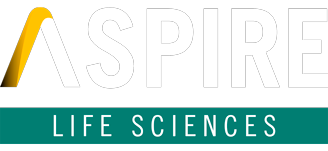
A Comprehensive Guide to Hiring the Best in 2024
The recruitment landscape, particularly in life sciences, is perpetually evolving. As we step into 2024, it’s important for those of us leading the charge in recruitment to adapt and innovate. With over a decade of experience in this fast-paced sector, I've gleaned insights crucial for shaping effective recruitment strategies. In this comprehensive blog, I'll share techniques that drive successful hiring in today's complex market.
1. Building a Robust Talent Pipeline: The cornerstone of any forward-thinking recruitment strategy is the development of a talent pipeline. This approach goes beyond just talent acquisition, it's about creating a dynamic database of potential candidates, tailored to foresee and fulfil future staffing needs. By nurturing relationships with prospective hires, you can significantly reduce the time-to-hire when a position becomes available. This method involves identifying critical roles, tapping into past applicants, alumni networks, and even interns, and employing innovative sourcing techniques like Boolean search. It's a proactive stance in talent management, ensuring a steady flow of qualified candidates.
2. Crafting a Compelling Employer Brand: In the digital age, an employer's brand is scrutinised more than ever before. It's no longer sufficient to just exist, a company must resonate with its potential workforce. Employer branding, thus, becomes a strategic tool, not just in attracting talent but in aligning their aspirations with the company's vision. A compelling employer brand is crafted through a robust online presence, engaging content, and active participation in industry events. It’s about creating a narrative that encapsulates the ethos and culture of the organisation.
3. Refining Job Specifications: In a highly competitive job market, the allure of a job posting cannot be underestimated. It's a delicate balance between being informative and engaging. As recruiters, we must articulate job roles in a manner that is concise yet comprehensive, highlighting the unique benefits and opportunities the role offers. This clarity helps in attracting candidates who are not just qualified but are a good fit for the company's culture and values.
4. Streamlining the Screening Process: The screening stage is often the bottleneck in the recruitment process. Accelerating this phase without sacrificing quality requires skilful execution. This involves embracing technologies like AI for initial resume screenings, adopting structured interviews, and utilising pre-screen tests to efficiently filter candidates. The use of one-way video interviews can also be a game-changer, offering flexibility to both recruiters and candidates.
5. Maximising Applicant Tracking Systems (ATS): An ATS is more than just a tool for an organisation, it’s a strategic asset in the recruitment process. A sophisticated ATS can sort applications, facilitating a more targeted approach to candidate selection. It also streamlines communication, keeping candidates informed and engaged throughout the process. Choosing the right ATS is a critical decision for a company that can have a profound impact on the effectiveness of the recruitment process.
6. Engaging Current Employees in Recruitment: Your current employees are your best ambassadors. They understand the company culture and can help identify potential candidates who would be a good fit. Encouraging employee referrals not only expedites the recruitment process but also brings in candidates who are more likely to be engaged and committed. Establishing a structured referral program can motivate employees to participate actively in this process.
7. Refining Interview Techniques: The interview is a critical moment in the recruitment process, serving as a window into the candidate's abilities and fit within the company. It’s crucial to conduct
interviews that are thorough and reflective of the company's values. Training interviewers to ask insightful questions and creating an environment where candidates can comfortably showcase their skills and personality is vital. Post-interview, a deliberate and considered decision-making process is essential to select the right candidate.
8. Enhancing Candidate Experience: Every interaction with a candidate, from the initial contact to the final decision, shapes their perception of your company. It's important to ensure a seamless, transparent, and respectful process. This includes efficient application procedures, consistent communication, and providing constructive feedback. A positive candidate experience not only improves the company's reputation but also builds a pipeline of future candidates.
9. Embracing Flexibility in Work Arrangements: Flexibility is increasingly becoming a key consideration for job seekers. Offering flexible work options, such as remote working and adjustable hours, can make a position more appealing. This flexibility is especially pertinent in the life sciences sector, where the nature of work can vary greatly. It's a strategic move that can distinguish your company in a competitive job market.
In the fast-paced world of life sciences, where innovation is at the forefront, our hiring strategies must be equally dynamic and forward-thinking. The methods I've shared are tried and tested practices that I've honed over the years in the field. They reflect a deeper understanding of what it takes to attract, engage, and retain top talent in a highly competitive market.
As we navigate through 2024 and beyond, these strategies will serve as foundational principles for building a resilient, responsive, and efficient recruitment process. They underscore the importance of human connection, technological integration, and strategic foresight in the art of recruitment.
Remember, the goal is not just to build a team that is robust, diverse, and aligned with your organisational goals. We must not only focus on the immediate needs but also anticipate the future demands of our industry. By doing so, we create a workforce that is capable of meeting current challenges and equipped to drive future innovations.
As a director in the life sciences recruitment sector, I've learned that the key to successful hiring lies in a balanced approach that values efficiency, engagement, and adaptability. These nine strategies offer a comprehensive roadmap to refine your recruitment practices.

